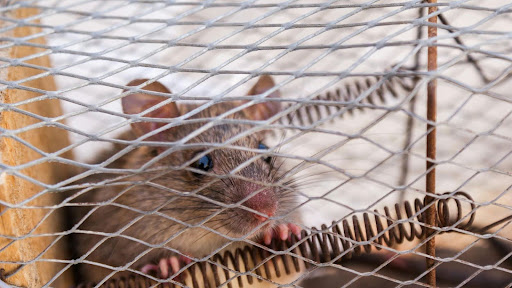When you hear scurrying in the walls or spot a tiny rodent darting across your kitchen floor, it’s easy to assume these little invaders are baby rats. But hold on—mice and rats, while similar, are their own unique species.
And if you want to combat either type of infestation successfully, you need to understand the differences between each of those species.
So are mice baby rats? No. But the good news is that being able to break down the differences can help you combat mice (or rats) more effectively. Here’s what you need to know.
Are Mice Baby Rats? How to Spot the Differences
Many homeowners mistakenly believe that mice are just young rats. This misconception often leads to ineffective pest control strategies.
Mice and rats are entirely different species with their own behaviors and characteristics. Knowing which one you’re dealing with can make all the difference when it comes to keeping your home pest-free.
Physical Differences
One of the easiest ways to distinguish mice from rats is by their physical appearance. Mice are generally smaller, with an average body length of 2.5 to 4 inches. They have large ears relative to their head size and long, slender tails covered in fine hair.
Rats, on the other hand, are much larger, with bodies that can reach up to 9 inches in length. Their ears are smaller in proportion to their heads, and their tails are thick and scaly. If you see a small rodent with a long, thin tail, you’re likely dealing with a mouse, not a baby rat.
Behavioral Differences
Mice and rats also exhibit different behaviors. Mice are curious creatures; they’re more likely to explore new environments and are often caught in traps because of their inquisitive nature. Rats are more cautious and may avoid traps and unfamiliar objects in their environment.
Understanding these behavioral traits might sound like you’re splitting hairs, but it can help you choose the right pest control methods. For instance, a curious mouse might fall for a simple snap trap, while a cautious rat may require more strategic baiting.
Habitat Preferences
Where you find a rodent can also give you clues about its species. Mice prefer to nest in warm, hidden places close to food sources. You might find them in kitchens, pantries, or behind appliances. Rats, however, are less picky about their nesting sites. They can burrow outdoors or find refuge in basements and attics.
Knowing where to look for these pests can help you effectively target their nests and prevent further infestations.
Reproductive Rates
Another significant difference between mice and rats is their reproductive rates. Mice breed rapidly, with females capable of producing up to ten litters per year. Each litter can contain up to
twelve pups, leading to a swift population increase if not controlled.
Rats also reproduce quickly but not at the same rate as mice.
Health Risks
Both mice and rats pose health risks, but the diseases they carry can differ. Mice are known to transmit hantavirus, salmonella, and lymphocytic choriomeningitis virus (LCMV). Rats, particularly the Norway rat and the roof rat, are carriers of leptospirosis, rat-bite fever, and the plague.
Dietary Preferences
Mice and rats have different dietary preferences, which can influence the type of bait you use in traps. Mice prefer grains and seeds, making peanut butter an effective bait.
Rats, being omnivores, have a more varied diet and may be attracted to meats, fruits, and even pet food.
Using the right bait can significantly improve your chances of successfully trapping these pests.
Signs of Infestation
The signs of a mouse infestation differ from those of a rat infestation. Mice leave behind smaller droppings, about the size of a grain of rice, while rat droppings are larger and more cylindrical.
Chew marks can also be a giveaway; mice tend to leave smaller, finer gnaw marks compared to the larger, rougher marks left by rats.
Effective Pest Control Methods
Knowing the differences between mice and rats allows for more effective pest control.
For mice, snap traps baited with peanut butter or cheese can be highly effective. For rats, live traps or bait stations filled with a variety of foods may be necessary.
You also need to take the time to seal off any entry points, as both mice and rats can squeeze through surprisingly small openings.
While DIY methods can be effective, severe infestations often require professional intervention. Pest control experts, like those at Natura Pest Control, have the experience and tools needed to tackle both mouse and rat infestations effectively.
Professional pest control services can provide a comprehensive approach, including trapping, exclusion, and ongoing monitoring, to ensure your home remains rodent-free.
Benefits of Choosing Natura Pest Control
Residents of the Vancouver-Portland Metro area can rely on Natura Pest Control for expert rodent management. Natura’s team uses eco-friendly solutions that are safe for your family and pets. Our local knowledge and commitment to customer service make us a trusted partner in pest control.
Natura Pest Control offers customized plans tailored to your specific needs, ensuring that your rodent problem is addressed promptly and effectively. We’ll also help you with proper identification. Are mice baby rats? Not at all, but identification is the first step in getting rid of any type of rodent.
It sounds like a small step, but remember that misidentifying these rodents can lead to ineffective treatment methods, prolonged infestations, and increased health risks. By knowing what you’re dealing with, you can take targeted action to eliminate these pests from your home.
If you’re dealing with a rodent problem, consider reaching out to the professionals at Natura Pest Control. We’ll give you the peace of mind you need for a pest-free home.
Don’t wait—schedule your appointment with Natura Pest Control today and take the first step towards a rodent-free home.



